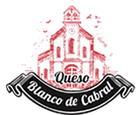Azzurro cheese
Cheese with strong and intense flavor, somewhat spicy, with molt.
* At present Azzurro Cheese production is discontinued.
Azzurro cheese (italian blue cheese) history
Among Italian cheese wealth we find blue cheeses which origins seem to be near Milan, although it is a disputed topic.
This zone was formerly a meeting point for many shepherds that took their herds to the mountains for pasture in those plains.
The word that formerly named this cheese was Stracchino, which means “tired”, making reference to the long crossings shepherds had to do to arrive at these plains with their herds spending hard days, in order that animals finally provided high quality milk and thus obtain an excellent blue cheese.
At the beginning, only the monks were allowed to elaborate this cheese because they possessed the necessary knowledge and techniques to obtain the best results. Afterwards, this learning was also taken to the farms where it would be produced by cheese makers.
This cheese was already known in the Middle Ages, although it was not until XI C that it began to have the molded aspect it shows nowadays.
In 1936, blue cheese became very famous in as well as out Italy, getting to the most circumspect English and French tables, being registered in a London newspaper of the time that it had taken the fame of other cheeses known in high cuisine.
Characteristic
It is an Italian table cheese, with creamy and unctuous paste, made of pasteurized whole cow’s milk, with a moldy aspect.
It shows the well-known greenish blue streaks caused by Lactobacillus bulgaricus and Streptococcus thermophilus bacteria as well as the mold spores Penicillium glaucum or Penicillium roqueforti. It is creamy and buttery, somewhat sweet; its spicy taste is subtly found because of its minimal blue-greenish tracing.
It is a fatty cheese, and among its nutritional values there is an outstanding input of proteins, minerals and vitamins, and although it is a fatty cheese it doesn’t have such a high fat content as other cheeses in the same category.
In order to enjoy this cheese in a 100%, it is recommended to have it at room temperature at least an hour before consumption so we will be able to taste its special flavor and exceptional creaminess.
This cheese has to be acquired in moderate quantities, those we know we are going to consume in a short time, because its maturing process is continuous during its conservation in our refrigerator.
Presentation
- Tart
- Wedge: 150 g.
Gastronomy
It is used as a flavoring ingredient in several Italian cuisine plates; for example, it is added at the final cooking of Risotto, and it can also be used with meat, vegetables, fish, pasta, potato, as another ingredient in salads and also in desserts.
It is one of the ingredients in the traditional plate called polenta. Sometimes it is added to pizza on its surface. Nevertheless, the most popular use is spreading it onto white bread with some black olives and endive leaves. It is also consumed as dessert, after a meal, together with several fruit as pears.
It tastes softer than Roquefort, it marries with everything sweet or salty, and it is no doubt delicious in multiple gastronomic applications or simply going with a slice of bread.
Thanks to its delicate flavor and creamy texture it is the favorite cheese for sauces and tables of cheeses, with salty biscuits or little pieces of fruit.
The recommended marrying can be some robust, strong-bodied red wine, some breeding red wine, and some rosé or thin white wine.
Flavor development
- Beginning of maturity Center: White and firm
- Semi maturity Center: small and firm
- Complete maturity All creamy
Nutricional information
Portion: 30 g. (1 slice)
| Amount per portion | % VD (*) | |
|---|---|---|
| Energetic value | 115/488 kj | 6 |
| Carbohidrates | 0,08 g. | 0 |
| Proteins | 6,7 g | 9 |
| Total fat | 9,7 g | 17 |
| Saturated fat | 1,5 g | 7 |
| Trans fat | 0 g | 0 |
| Dietary fiber | 0 g | 0 |
| Sodium | 172 mg | 7 |
| Calcium | 246 mg | 24 |
(*) Daily Values for a 2000 Kcal or 8000 kj diet. Daily values can be higher or lower depending on energetic needs.













